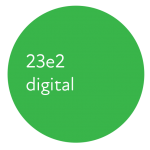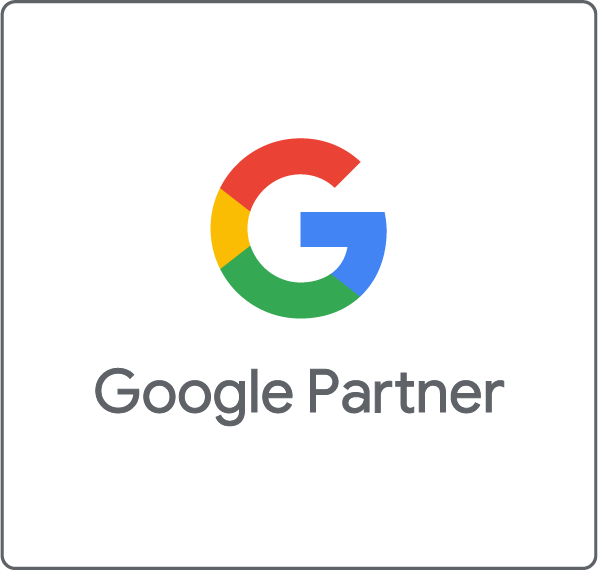Snippet Optimization
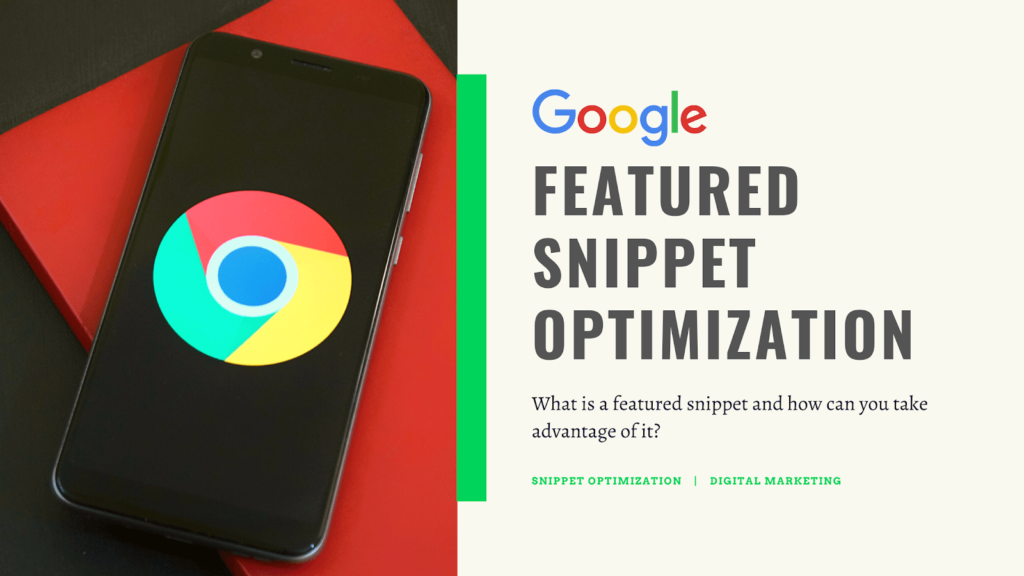
“Google it” is a phrase often used to tell someone to search for the answer of a question using the most widely used search engine in the world, Google. When Larry Page and Sergey Brin invented Google back in 1996, they aimed to create a search engine that would improve the way search results were populated in relevance to the websites they were found on. At its inception, Google intended to answer questions right away without overcomplicating the process of finding the answers. Overtime, new features were created and featured snippets was one of them.
Table of Contents
What are featured snippets?
A featured snippet’s position is often called “position-zero” and it may appear in four different forms: paragraph, image or video, table or lists.
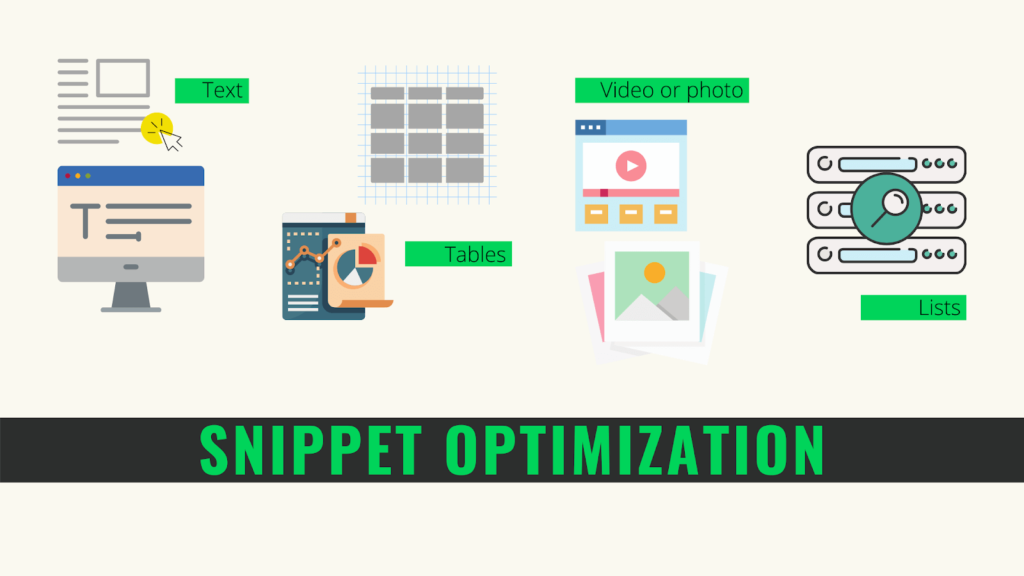
Paragraph
For example, when asked “what is email marketing automation?” Google’s featured snippet was in the form of a paragraph box.
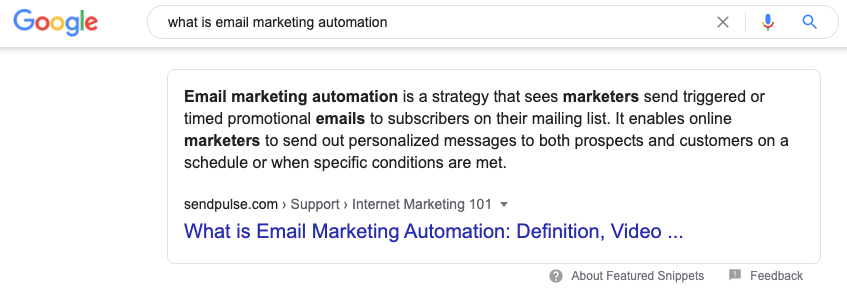
Only words or phrases that are the same or relevant to the question are bolded and this short summary should more or less give the user the answer they are looking for.
In the example above, the question of “what is email marketing automation?” was answered using SendPulse’s answer paragraph in their article, “What is Email Marketing Automation”. The phrase and words “email marketing automation” and “emails” are bolded as they are found in the question but “marketers” was also bolded because it pertains to the question as well. Using a relevant summary, Google answered the question without the user ever leaving the Google search results page and entering a third-party site.
Tables
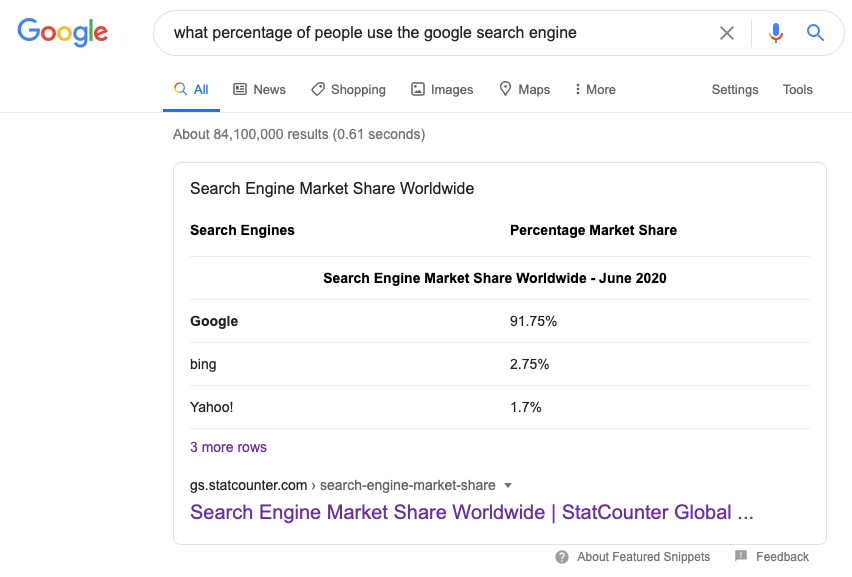
When featured snippets appear as a table, it is because the question pertains to data, numbers or figures. For example, “what percentage of people use the google search engine?” concerns a numerical answer and Google has picked up on this, offering a featured snippet table from a third-part website that lists percentages of search engine users. If the user wants to know more about this statistic or article, they are able to click on the link below the table.
Videos or Photos
Sometimes, featured snippets appear or include images which can facilitate the reader’s ability to process the information.
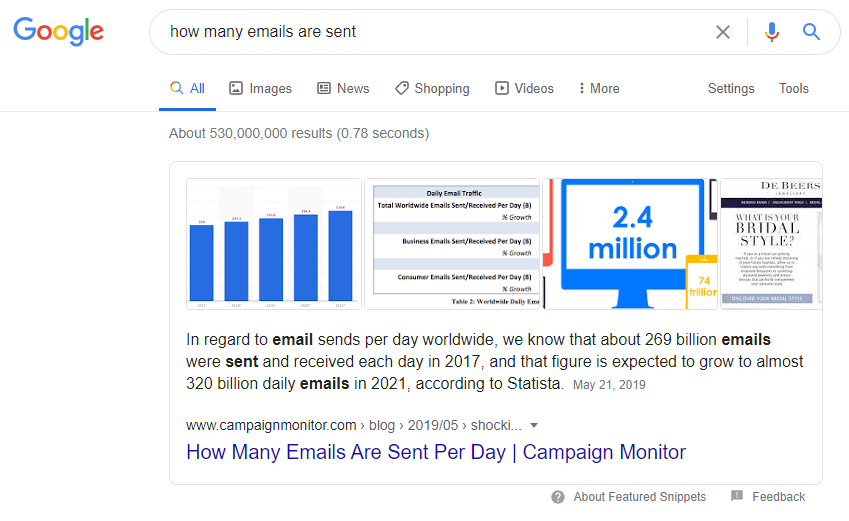
In the question above, “How many emails are sent?”, Google populated a featured snippet paragraph including visual aids. According to Exposure Ninja, images with text inside perform better than plain images because it not only helps the reader understand the article better but it informs Google that there is even more relevant information included in this article.
The more information, the better but Google will only select the most appropriate summary as their featured snippet.
YouTube Featured Snippet
Google has developed a clever way to begin incorporating its video-sharing platform subsidiary on SERP. Sometimes, questions can be easily answered in the form of videos which is where a brand or website YouTube channel can become an asset for SEO.
To find a featured snippet with a video attached, mentioning the word “video” in the search bar is not required.
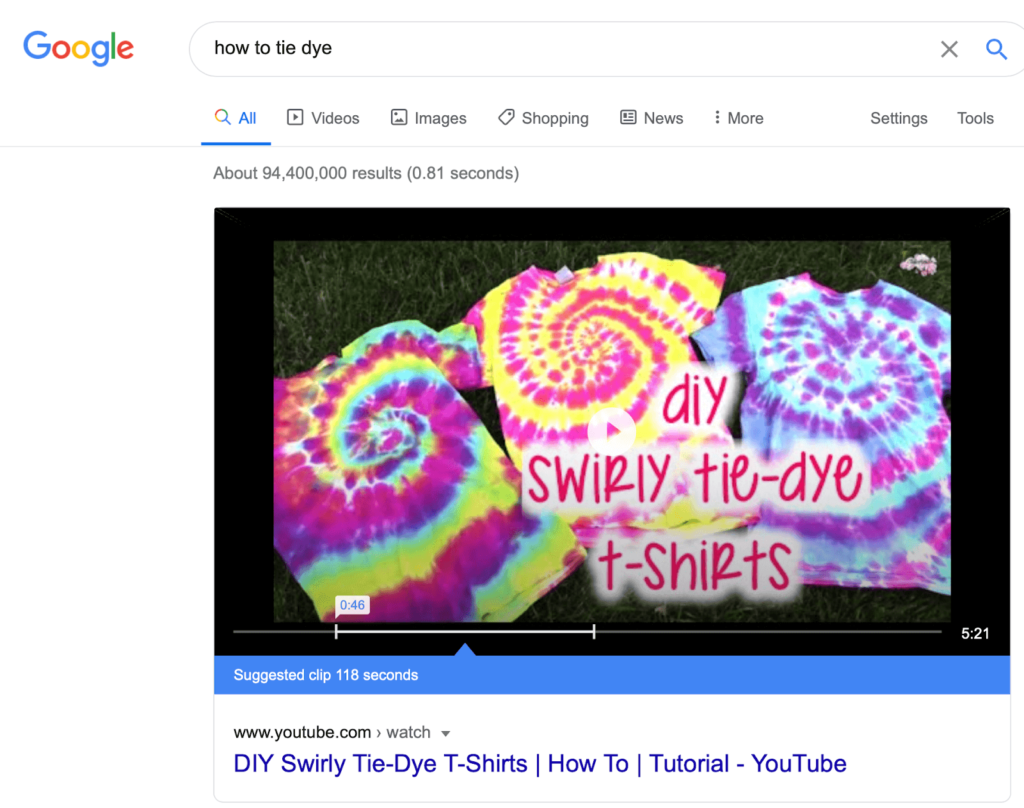
In addition to this, Google has marked the slot time in the video that pertains to the question. This is an extremely convenient feature that Google has created because when the viewer presses play, Google plays the clip in the video that answers the question searched right away.
The viewer never has to leave Google’s search results page. This convenient tool makes it so no third-party website visits are necessary to allow Google to optimize its results page by providing the answers immediately.
More examples of featured snippet videos…
The question that populated this result was about “How to make a birthday cake video”. Like all featured snippets, the video appears as the first result on the page. It is encased in the special featured snippet box with a link to the entire video and a blue “suggested clip” bar. In this case, the suggested clip is 50 seconds long.
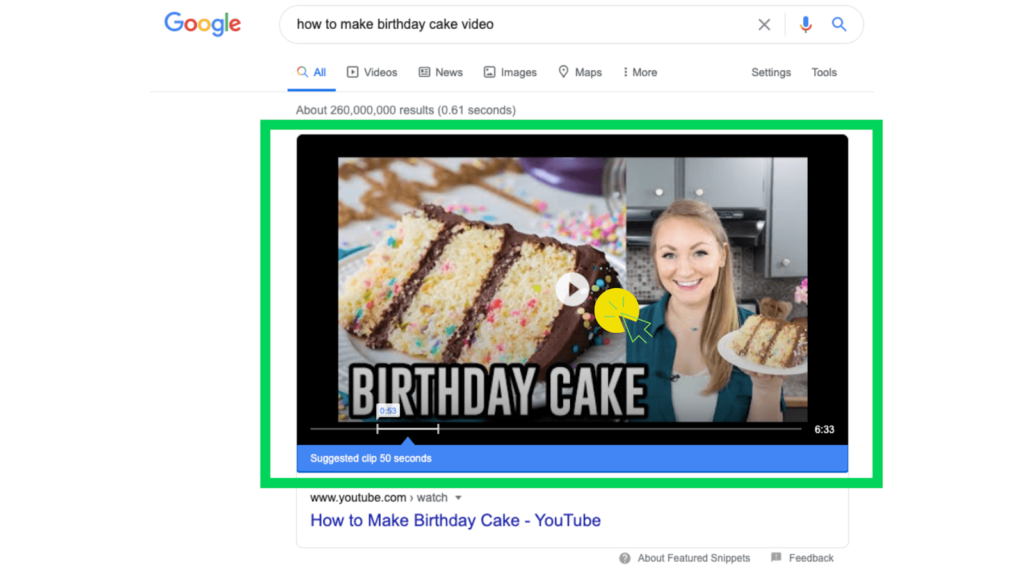
As mentioned with featured snippet videos, Google has inputted a time slot that covers the information most relevant to the question asked.

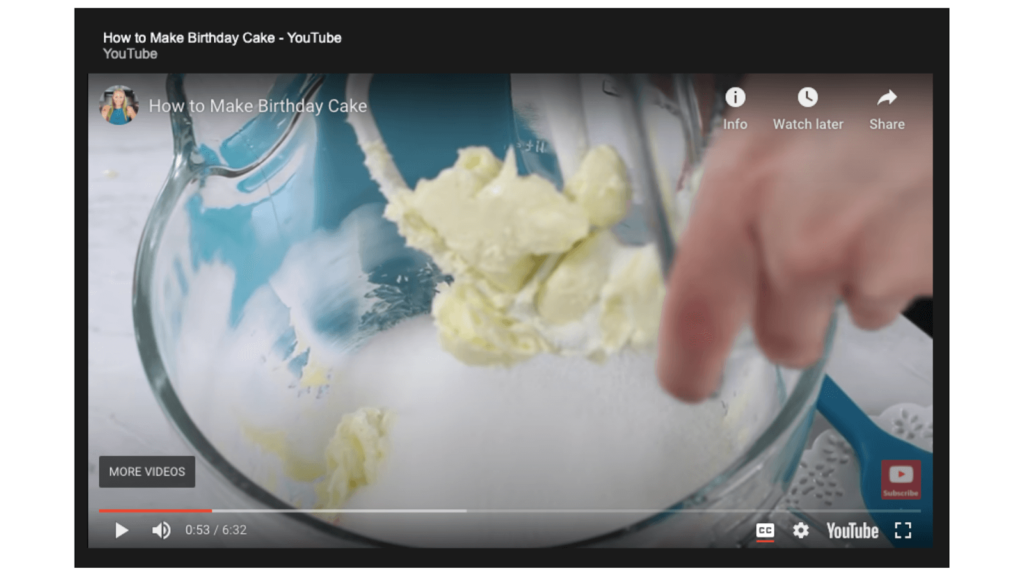
When the featured snippet video is clicked, within the same page Google created a popup frame to play the clip and it will begin playing at the highlighted time automatically.

This is a closer look at the clip’s start time where the question will most likely be answered.
Not only will Google use YouTube videos as a featured snippet, but now users are able to optimize the video description box using SEO. Using answer targets and keywords, you are able to use this as another opportunity to secure a featured snippet position.
Lists
Some featured snippets also come in lists that answer “how-to” or “how many” questions. This clearly outlines the steps or instructions that answer the user’s question.


In this example, the featured snippet outlines the steps to take when starting a business. The reader can easily follow step by step on how to start a business and, without typing it in, Google chose to use a local and credible site that answers this question. So the content in the described steps specifically pertains to the reader’s location.
What isn’t a featured snippet?
Rich Answers
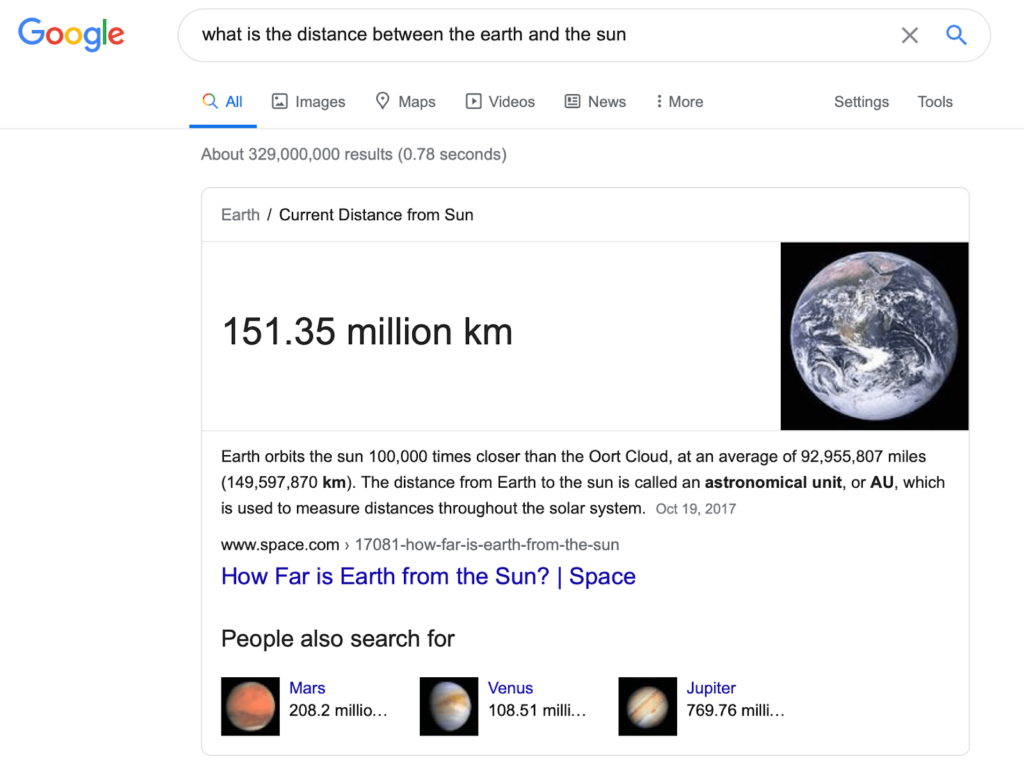
Knowledge Graph

Rich Snippet

How can someone get a featured snippet?
Do’s and Don’ts

According to Databox, there is about a 93% chance that users are more likely to click on a featured snippet than to ignore it. This means that a website is 93% more likely to increase their click-through-rates. Of course, to get to the top of Google’s results page there are specific attributes to achieve that position. Aside from no profanity, Google uses only posts that use SEO. This is when a website optimizes important keywords that are most likely going to be used in a question or an answer.
When an article performs as a featured snippet, the website itself doesn’t necessarily have to be ranked #1 in its industry, despite what it may look like. Reaching position-zero is free because Google has chosen a specific site that best answers the question at hand but it can easily update that selection if something better comes along so it won’t last forever.
No biases, opinions or propaganda
To obtain a featured snippet, the article (and answer target especially) cannot appear to be propaganda, biased or opinion-based. This will stray the blog post away from being a fact-based resource to an opinion-based journal entry. Google will interpret it as a persuasive piece of content that doesn’t provide any concrete proof of information.
Focusing on SEO will increase the probability of an article to reach featured snippet level because there is a strong focus on keywords. Most articles answer a question, or multiple questions. Keeping a specific question at the forefront of the writing process will assure that the content produced is going to stay on topic. This will also promote the article to appear on the first page of the search results because of keyword optimization.
Can Someone Opt-Out of Featured Snippets?
Yes, but this is discouraged. Ahrefs’ content writer, Michal Pecànek, reported that although you do have the option to opt-out of featured snippet status, it isn’t worth it. When cyrus Shepard tested this out for the masses, he discovered that it resulted in a 12% decrease in traffic.
If opting-out is something you are willing to do despite its risks, you can include a max-snippet robots meta tag.
“This tag specifies the maximum number of characteristics Google can show in their text snippets. And because featured snippets are longer than descriptions in regular snippets, you can set the character limit to the usual maximum length of description. That’s around 155-170 characters.”
Simply copy and paste this code snippet into the <head> section of the page you want to remove from featured snippets:
This snippet may not be 100% effective according to Google but only the restrictive methods of using nosnippet robots meta tag or data-nosnippet HTML work.
What are Answer Targets?
The organization is especially critical if the goal of an article is to achieve featured snippet status. Planning ahead, outlining the order of the subheads and supporting text will mean a more successful answer target that Google may use as a featured snippet. When a paragraph is bolded, highlighted or both, it is referred to as an “answer target”. It was intentionally formatted to look this way so Google would notice it.
In the next example, the writer of the article used “answer targets” which is a tactic that many blogs use for snippet optimization.
When clicking on the link associated with the featured snippet that was used to answer the question, “What is email marketing automation?”, it led to the website that published it.

The content of this answer target is also concise, leaving no room for any biases or opinions. There is no mention of email marketing automation as being “the best” or “the worst” strategy in marketing. It also includes secondary words that are associated with email marketing automation. Additionally, there are no catchphrases that persuade a reader to continue reading, it simply states the definition of email marketing automation.
In the same example, the featured snippet’s answer target is located as the first chunk of the text of the article. However, this is not always the case. As long as answer targets follow the guidelines in this article, the higher the success rate of it being a featured snippet.
Here is an example of an answer target not being the first part of an article. “How to use social media for your business?”, was searched on Google and there was a featured snippet list to answer it.
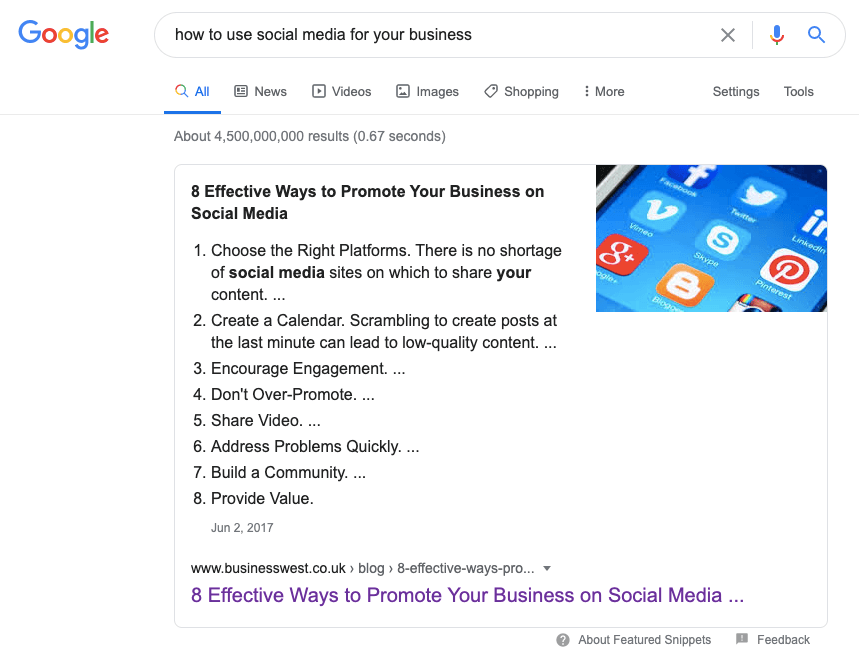

Here is the introduction to this article with the steps located below it.
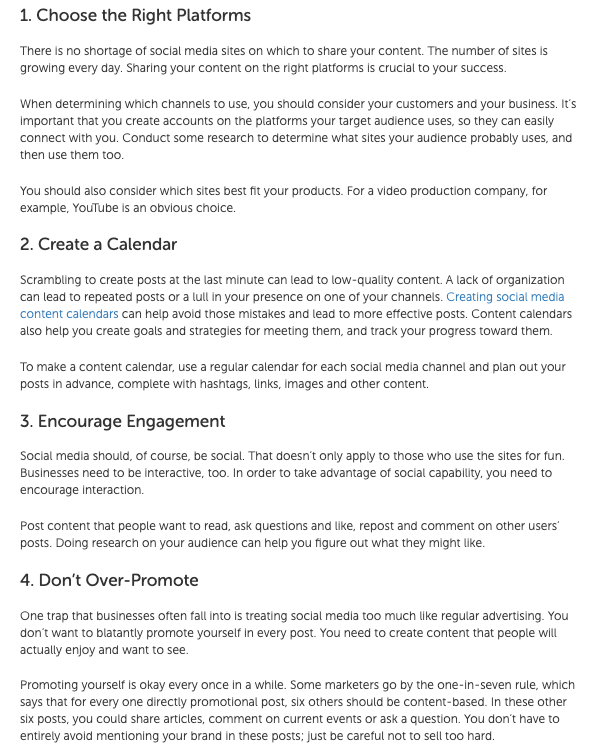

According to Income School, approximately 76% of their snippets come from the first 500 words of a blog post. Within this parameter, as a writer. it is crucial that some context is provided. Writing a first paragraph is helpful because this will let Google’s AI know that an answer is about to be given. In addition, the answer target should stand alone meaning that it is separate from the introductory, supporting and concluding paragraphs.
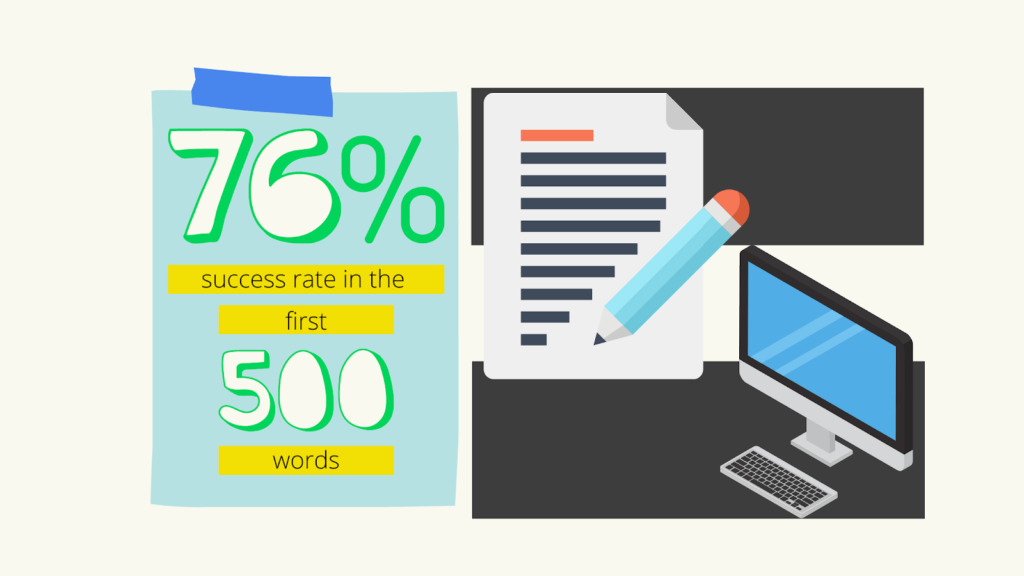
The following paragraphs of an answer target elaborate and provide examples to reinforce the statement. It is useful to format the content as well. Subheadings in an article help Google to determine whether the article provides further support to the question asked. SEO is also going to play a significant part of the success of a blog post, increasing its likelihood of appearing on the first results page. This will rank the blog post as being one of the most relevant ones pertaining to the question. When keywords and clearly formatted unbiased definitions or explanations are combined in an answer target, Google may pick it up as a featured snippet.
Check out the competition
If a site is trying to reach position-zero but a competitor has already taken its spot, it still has a chance. As mentioned above, Google can easily update their featured snippet and replace the current one with a better, updated version of it from a different website. Scoping out the competition puts a site at a competitive advantage because they are able to improve on what is already out there.
For example, if a site wants to write an article about “what is graphic design” then some level of research is required. To answer the “what” portion of the question, a definition is usually involved. A useful tactic is to research what definitions are already out there and selecting keywords that will make their article stand out from the rest.
Other things to consider are the length of the article, its formatting (including subheads, images, keywords), any gaps in the information that the audience might want to know more about and finally, reflect on the different questions that the competitor’s article might be answering. The more questions an article answers, the higher chance they’ll be selected as a featured snippet because it’s more likely that important keywords are going to be included in the article. A useful tool worth using is Answer the Public. This website allows users to type in a topic of choice and it will collect questions that people are searching under that specific topic. This facilitates the writing process and will expand on sub points that are worth mentioning which will, in turn, get Google to notice that blog post.
Aside from the information gap, there can also be a gap in visual aids. People perform 323% better with text illustrations than without them so adding useful photos or icons is beneficial to the success of not just a featured snippet, but also a post in general. Photos with text are also more prone to obtain position-zero.
Perks of snippet optimization
As mentioned, a featured snippet appears at the top of the results page following paid ads. The special box and paragraph, image, video or list become the most prominent feature on the results page.
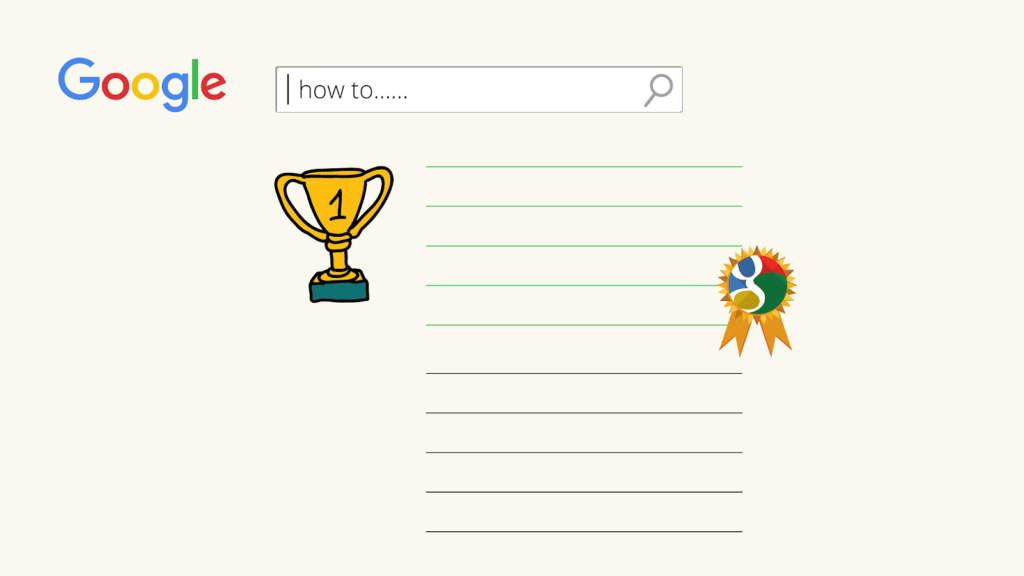
The featured snippet can be an advantage to a website’s success because it is more likely to be clicked on than the competition below. Another advantage is that when selected, viewers will think that it is a credible answer because Google has selected it as their featured snippet for that question. This recognition is great for building brand trust.
Other forms of featured snippets
People also ask
Another way that Google generates a feature snippet is through their “People also ask” feature which acts as a drop-down menu option for other topics that could be associated with their original question. It furthers the user’s research process but, again, summarizes those answers as well all in one place. The special “People also ask…” box is always located at the top of the results page either before or after the selected featured snippet or Ads.
In the example of “What is email marketing automation”, this is the order of the first page: ads that companies paid Google to allow their links to be at the very top of the page, the featured snippet to the question and the “People also ask” box.

As mentioned previously when you click on one of the titles in the box, it will prompt a drop-down featured snippet for that question.

Carousel (or Bubble) Snippets
In 2019, Google introduced carousel (or bubble) snippets which suggest related keywords to the searched question allowing users to expand on the searched topic.
There are a couple of benefits to this relatively new feature. For one, Google sub-categorizes the question and the search results page becomes more filtered to allow for results optimization.
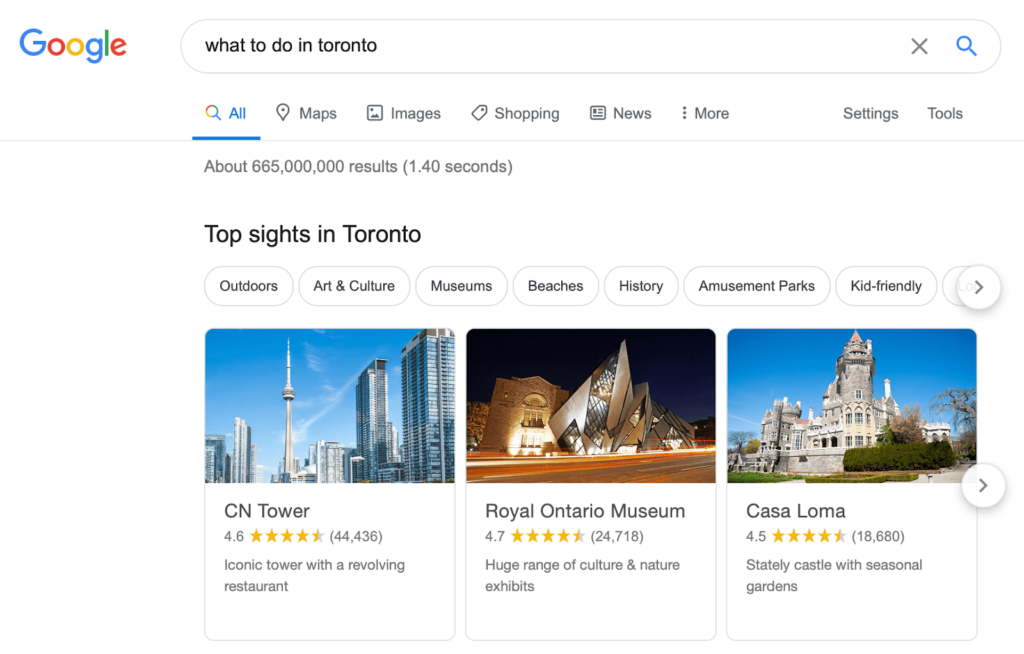

Google allows users to horizontally scroll through the different category bubbles that are relevant to the question or topic searched. The carousel featured snippet bar can appear at the bottom or top of the featured snippet. It specifies the content and results page giving users the opportunity to refine what they’re looking for and most likely, give them more than they were asking for.
When a user clicks on one of the bubbles, Google refreshes the results page to better suit the needs of the user.
- About two-thirds of the bubbles are from websites that rank 2 through 10 on the search results page;
- There are exceptions to the “just rank higher” rule;
- The bubble snippets give websites more opportunities to gain more exposure with something called “multi-answer ownership”.
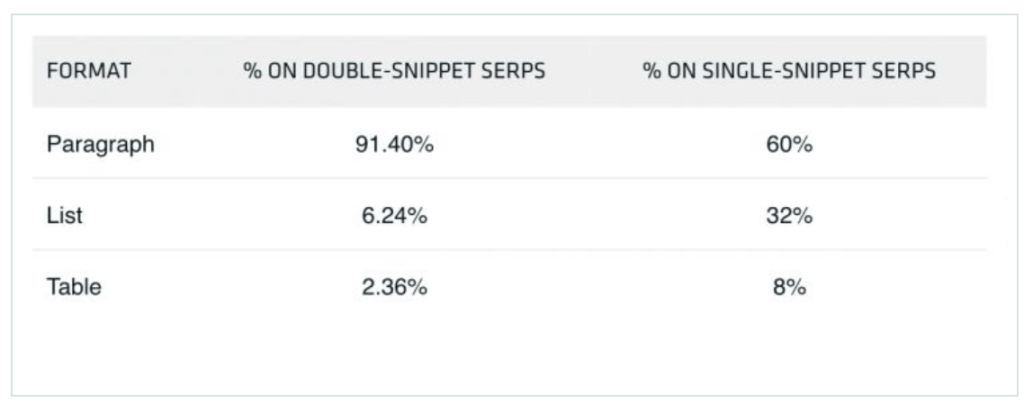
When a user selects a bubble to refine their search, Google allows for the answers to come from the same domain. Moz reported that 57.37% of carousel snippets two or more bubbles that came from the same domain. Google has always pulled results that are most relevant to the topic being searched and this algorithm is stronger than ever with carousel snippets.
Another interesting observation and reporting made by Moz was that the parent (or most popular) snippet came from paragraphs and lists. Paragraphs ranked at the top with Lists trailing behind. What this teaches us about SEO is that there are more opportunities to rank at the top than initially thought, especially with the introduction of carousel and bubble snippets.
What is the trick to master carousel snippets? Well, the rule to gain snippet optimization doesn’t change. Have your answer targets ready to go but also try to cover everything there is to know about the topic and remove anything that is irrelevant. In addition, always pick the best format to display your content because the point is to have the most relevant content displayed in the most relevant format.
The Double Featured Snippet
You may have guessed already what a double featured snippet is. This occurs when Google displays two featured snippets at the same time, instead of one. It’s a clever way for Google to assure that the user is satisfied with the answers that were generated for them. There could be more than one possible answer to a question, not to mention the interpretations and meanings that could be linked to it. To Google’s benefit, it decreases the likelihood of users leaving the search results page because the user has an extra answer to their question. Ultimately, Google doesn’t want its users to leave the search results page.
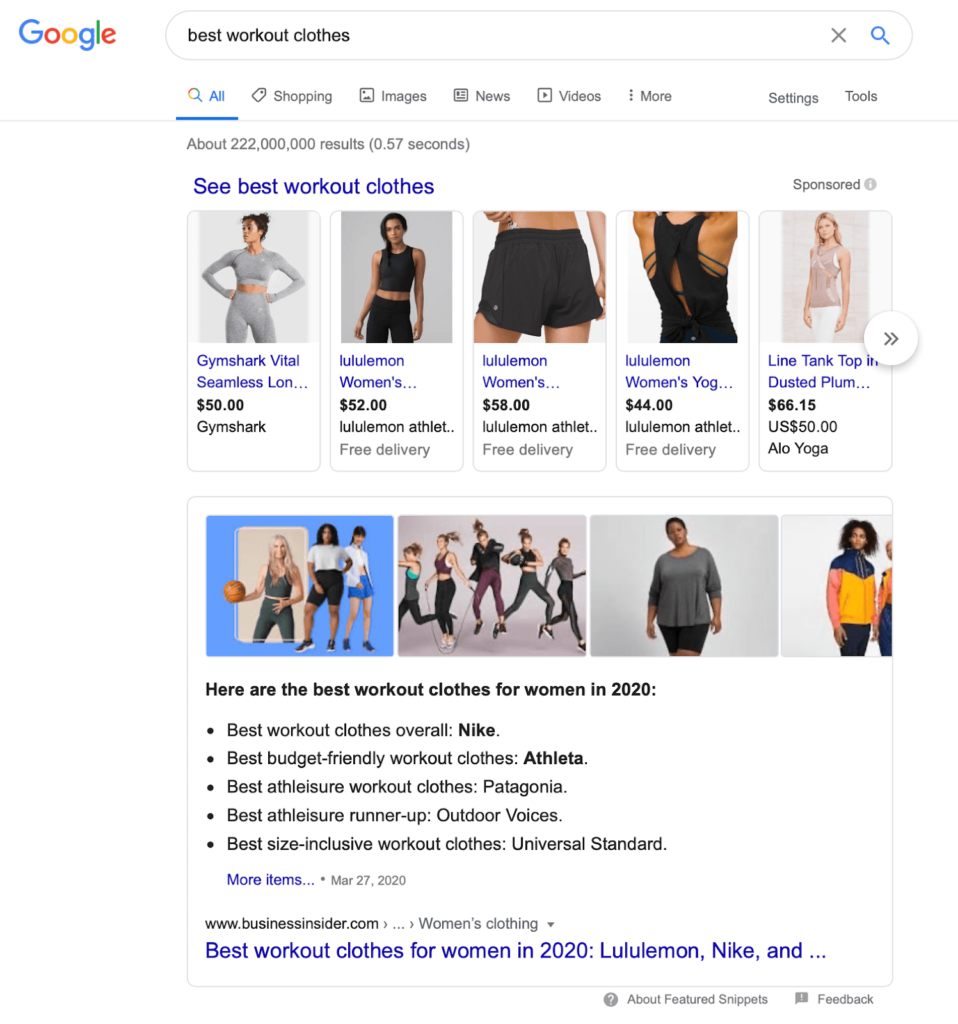
What does this mean for sites?
Well, there are pros and cons to a double featured snippet.
On the one hand, this gives sites a second chance to gain a featured snippet. On the other hand, if the site is in spots 3 to 10, the click-through rate decreases significantly. The reason for this is because Google has provided the user with more than one answer which can decrease the chance of them to click on another link or resource for a different answer.
The Two-for-One Featured Snippet
A two-for-one featured snippet includes a combined snippet. Sometimes, a query can be answered using an image and a paragraph or any other combination of featured snippets.
Here is an example of a two-for-one featured snippet:
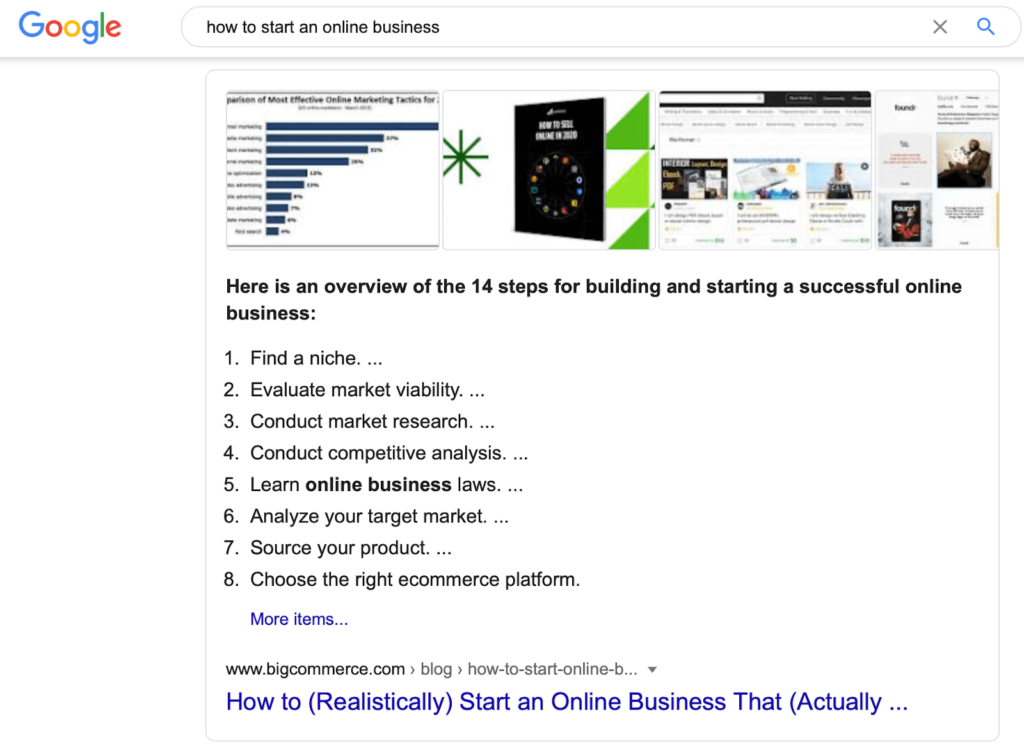
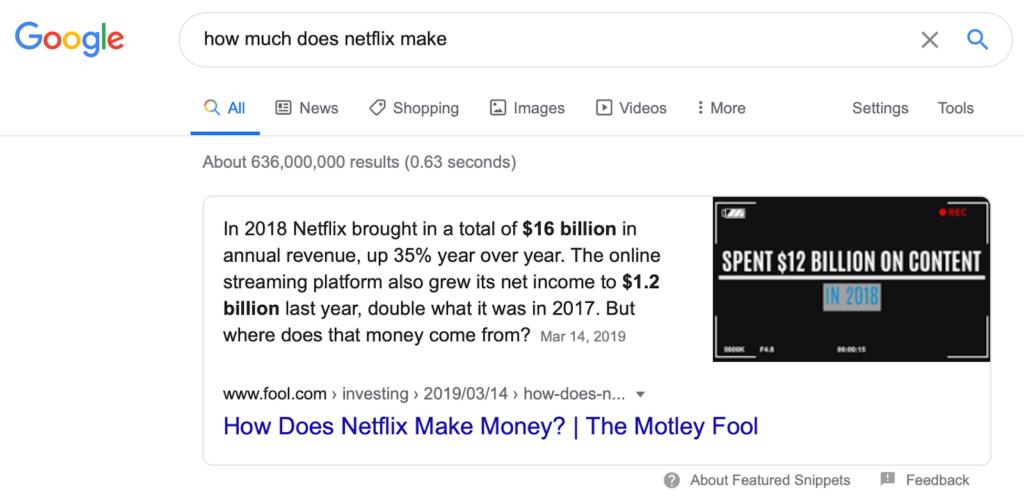
Conclusion
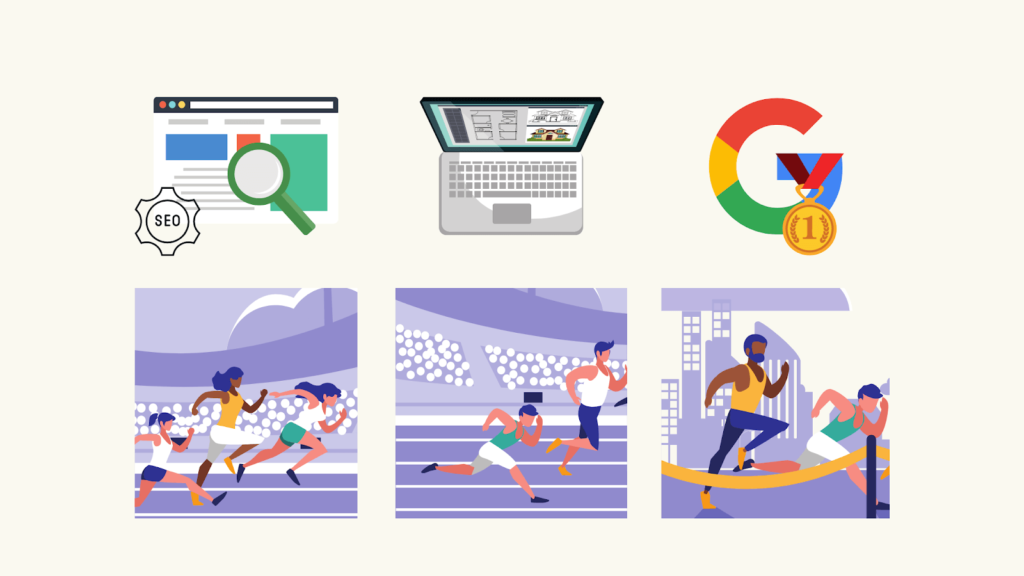
Featured snippets are a form of free advertising but unlike advertising, it does not stay the same for an extended amount of time. Income School reported in their Most SEOs Completely Missed this Opportunity in 2020 video that featured snippets are always changing so adapting the content to specific information is what will sustain a website’s position in position zero.
There is a misconception that featured snippets are guaranteed to generate more traffic to a site, but this is false. Although featured snippets do provide a different kind of exposure for the site on display, it only gets 8.6% of clicks while the second result that ranks below it receives 19.6% of clicks!
After a study conducted by Ahrefs, it was noted that featured snippets reduce click rates on SERP (search engine results page). The reason being is that the purpose of a featured snippet is to provide an instant answer to the user’s question so that they never have to leave the search results page.

Featured snippets are a form of free advertising.
It tells the audience that according to Google, this particular post is the most accurate to answer the given question. There is no specific formula to achieve a featured snippet, but the best practices outlined above will increase a site’s likelihood of obtaining position-zero.
- Plan and format the content that is most suitable for the question.
- Scope the competition to provide a content-rich article that is better than the rest
- Answer targets must be concise and fact-based only to achieve position-zero.
- Optimize on photos with text but remember to keep everything on relevant.
One thing for certain is that a featured snippet is guaranteed going to attract more traffic to a site and improve the site’s credibility.
© 23e2 Business Services Inc. | Working With 3rd Parties
© 23e2 Business Services Inc. | Working With 3rd Parties
